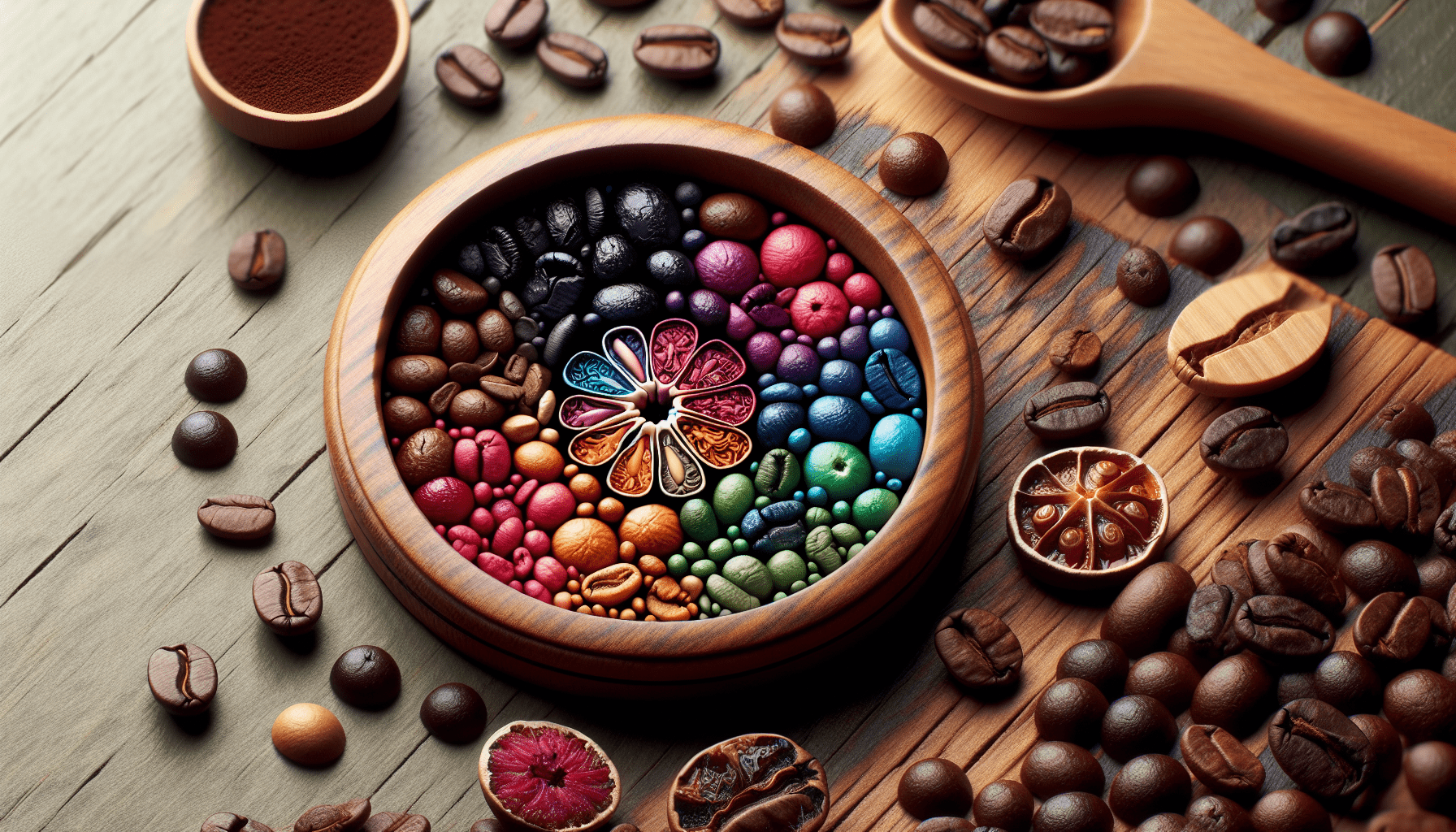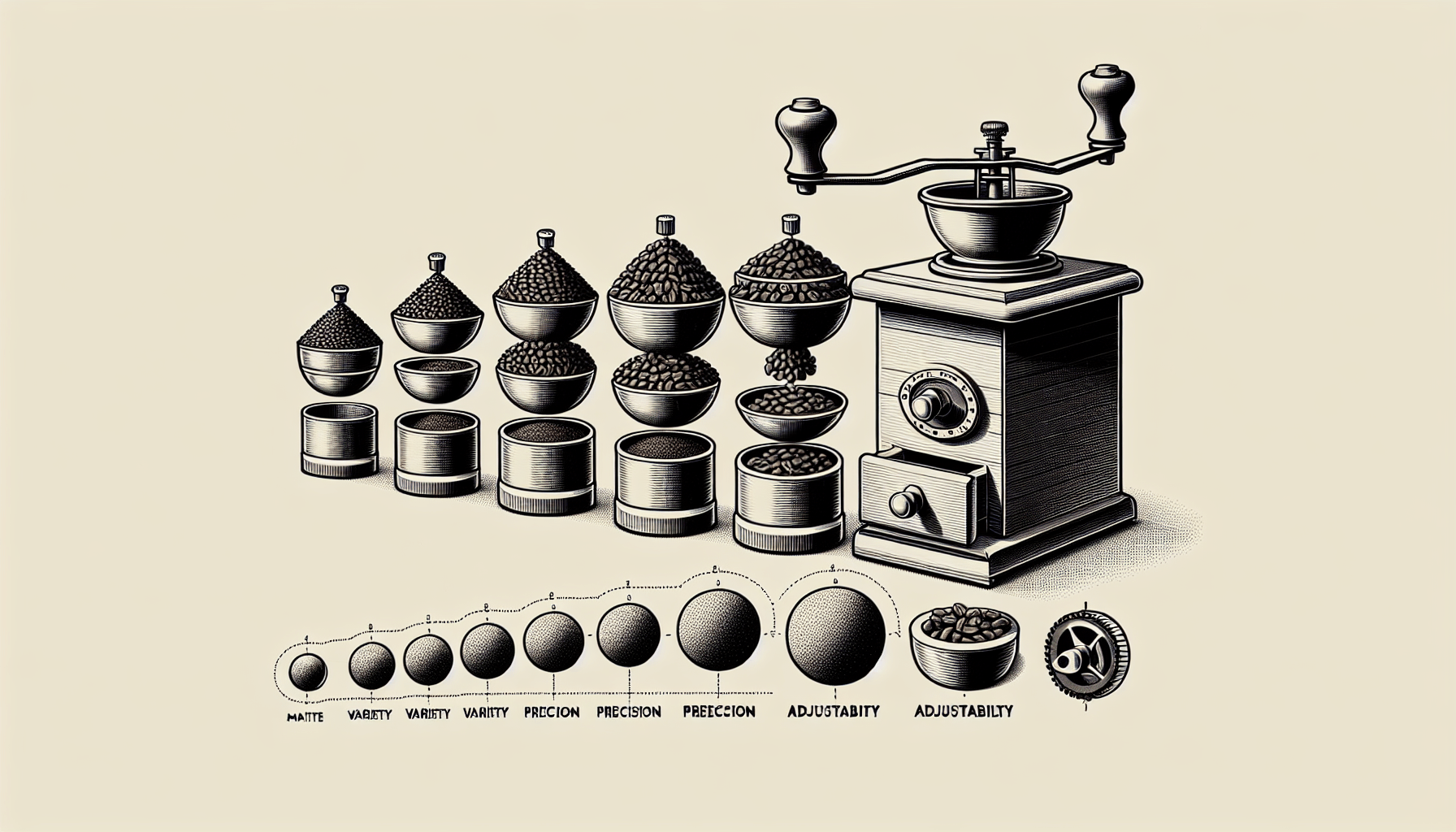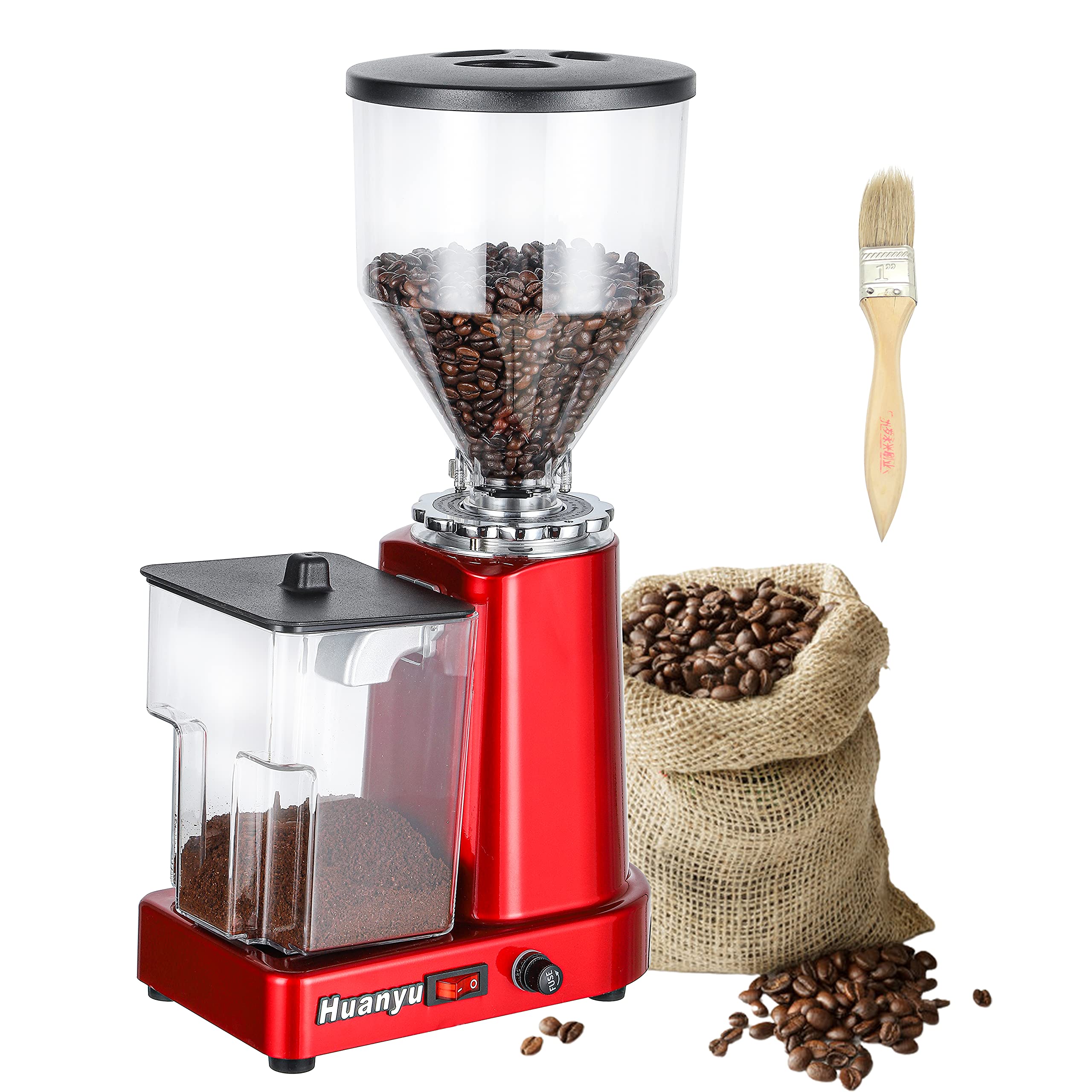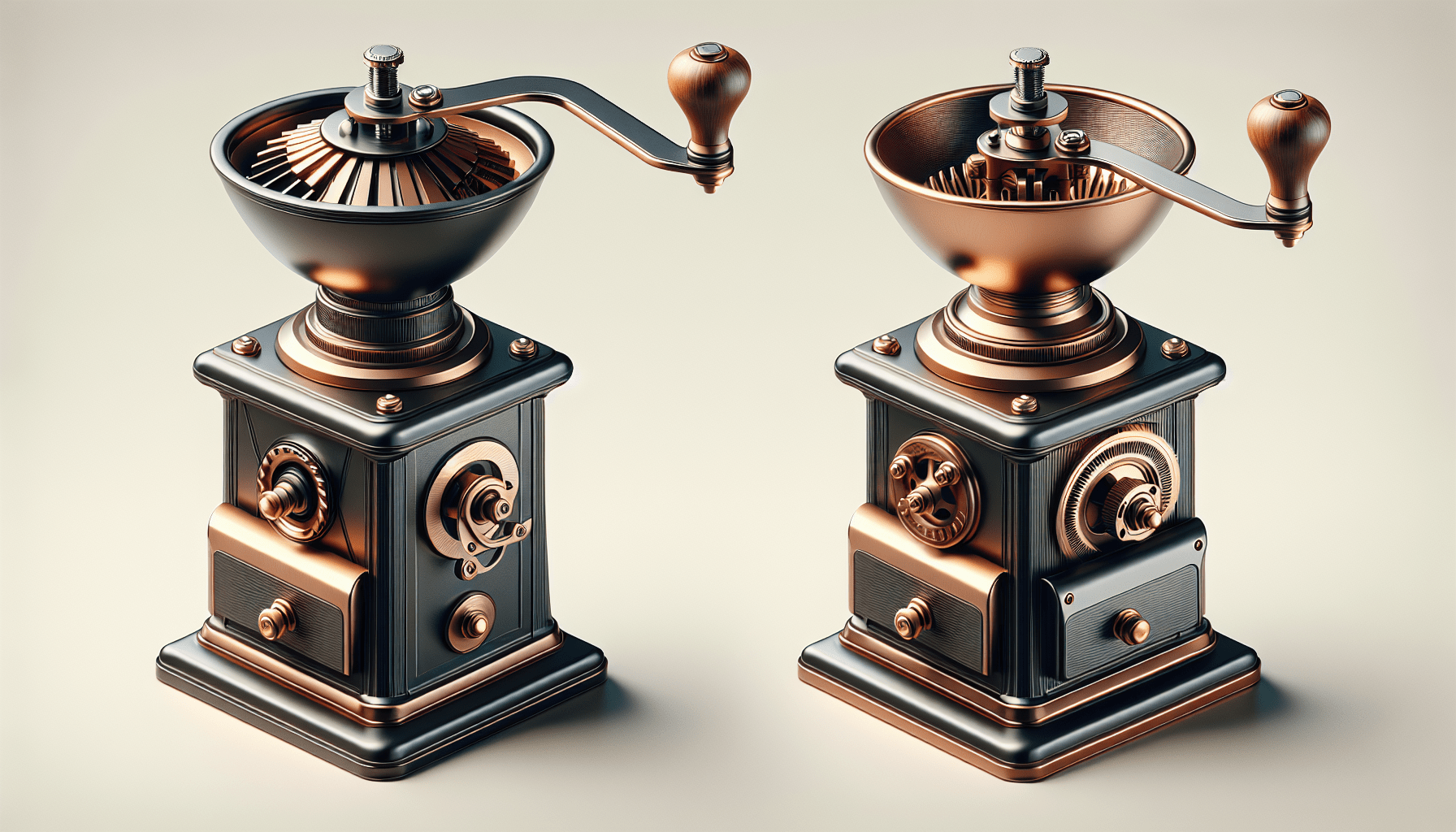Imagine waking up to the enticing aroma of freshly ground coffee filling your kitchen. As you eagerly prepare your coffee maker, you wonder if you can enhance your morning routine by using flavored coffee beans. The question arises: can you grind flavored coffee beans in a coffee grinder machine? Let’s explore this fascinating topic and discover if it’s possible to unlock a world of unique flavors in your daily cup of joe.
Introduction
Are you a fan of flavored coffee beans? If so, you may be wondering how to grind them properly in your coffee grinder machine. In this article, we will explore the world of flavored coffee beans and discuss the impact they can have on your grinder. We will also delve into the different types of coffee grinders and how each one handles flavored beans. By the end, you’ll have a better understanding of the best practices for grinding flavored coffee beans and maintaining your grinder’s performance.
Overview of flavored coffee beans
Definition of flavored coffee beans
Flavored coffee beans are regular coffee beans that have been infused or coated with various flavors to enhance the taste and aroma of the brewed coffee. These flavors can range from classic options like vanilla, caramel, and hazelnut to more unique combinations like cinnamon, coconut, or even chocolate mint. The possibilities are endless, making flavored coffee beans a popular choice for those seeking a different coffee experience.
Common flavors used in flavored coffee beans
There is a wide variety of flavors available for coffee enthusiasts to choose from. Some of the most common flavors used in flavored coffee beans include:
- Vanilla: A classic and versatile flavor that complements various roast profiles.
- Hazelnut: Known for its nutty and slightly sweet taste, hazelnut adds a pleasant aroma to the coffee.
- Caramel: Caramel flavor provides a rich, sweet taste that pairs well with medium to dark roast beans.
- Chocolate: Whether it’s milk chocolate, dark chocolate, or white chocolate, this flavor adds richness and depth to the coffee.
- Pumpkin spice: Popular during the fall season, this flavor combines cinnamon, nutmeg, ginger, and cloves for a warm and festive taste.
These flavors are just the tip of the iceberg, as coffee companies constantly experiment with new and exciting combinations to cater to different palates.
Types of coffee grinder machines
When it comes to grinding coffee beans, there are two main types of coffee grinder machines: blade grinders and burr grinders. Each type has its own unique features and considerations, so let’s explore them further.
Blade grinder
A blade grinder is the most common and affordable type of coffee grinder. It consists of a motorized base with a spinning blade at the bottom. To grind the coffee beans, you simply pour them into the grinder’s container and press a button to activate the blade. The spinning motion of the blade chops the beans into smaller particles.
Burr grinder
On the other hand, a burr grinder uses a combination of two rotating burrs to crush the coffee beans between them. This produces a consistent and uniform grind size. Burr grinders are generally considered superior to blade grinders for their ability to achieve a more precise grind.
Impact of flavored coffee beans on coffee grinder machines
While flavored coffee beans may seem harmless, they can have an impact on your coffee grinder machine. Here are two key considerations to keep in mind:
Oils and residue from flavored beans
Flavored coffee beans often contain oils and residues from the added flavors. These substances can accumulate on the blades or burrs of your grinder over time, leading to clogging and decreased performance. Regular cleaning and maintenance are essential to prevent this build-up.
Potential flavor cross-contamination
Another concern when grinding flavored coffee beans is the potential for flavor cross-contamination. If you use the same grinder for both flavored and non-flavored beans, there is a chance that the residual flavors from the previous grind will transfer to the subsequent grind, affecting the taste of your coffee. This is especially true if the grinder is not thoroughly cleaned between uses.
Using a blade grinder for flavored coffee beans
Advantages
Blade grinders are convenient and easy to use. They are also more affordable compared to burr grinders. When it comes to flavored coffee beans, a blade grinder can effectively chop them into smaller particles, releasing the flavors and aromas.
Disadvantages
However, there are a few drawbacks to using a blade grinder for flavored coffee beans. Firstly, the inconsistent grind produced by the blades can lead to uneven extraction during brewing, resulting in a less flavorful cup of coffee. Additionally, the high-speed spinning blades can generate heat, which may alter or diminish the flavors of the added ingredients.
Tips for using a blade grinder with flavored beans
If you decide to use a blade grinder for flavored coffee beans, here are some tips to achieve the best results:
-
Pulse grind: Instead of continuously running the grinder, pulse the button to achieve a more even grind consistency.
-
Shake the grinder: As the blade chops the beans, they can become compacted at the bottom. Give the grinder a gentle shake between pulsing to ensure a more uniform grind.
-
Clean regularly: Due to the oils and residues in flavored beans, it’s crucial to clean your blade grinder more frequently. Follow the manufacturer’s instructions for proper cleaning and maintenance.
Using a burr grinder for flavored coffee beans
Advantages
Burr grinders offer several advantages when it comes to grinding flavored coffee beans. The slow and consistent grinding action of the burrs ensures a uniform grind size, enhancing the extraction process and resulting in a more flavorful cup of coffee. The burrs also generate less heat compared to blade grinders, preserving the delicate flavors of the added ingredients.
Disadvantages
One potential disadvantage of using a burr grinder for flavored coffee beans is that the oils and residues from the beans can accumulate between the burrs, affecting their performance over time. Regular cleaning and maintenance are necessary to prevent any issues.
Tips for using a burr grinder with flavored beans
To make the most of your burr grinder when grinding flavored coffee beans, consider these tips:
-
Adjust the grind size: Experiment with different grind settings until you find the ideal size for your desired coffee flavor. Generally, a medium grind works well for flavored beans.
-
Clean thoroughly: Due to the potential build-up of oils and residues, it’s important to clean your burr grinder regularly. Refer to the manufacturer’s instructions for the recommended cleaning routine.
-
Use separate burrs: If you have one burr grinder for both flavored and non-flavored beans, it’s advisable to purchase an additional set of burrs specifically for the flavored beans. This helps minimize the risk of flavor cross-contamination.
Cleaning and maintaining a coffee grinder machine when grinding flavored beans
Proper cleaning and maintenance are crucial when grinding flavored coffee beans to ensure optimal performance and prevent flavor contamination. Here’s a breakdown of the key steps:
Regular cleaning routine
Regardless of the type of grinder you use, a regular cleaning routine is essential. Wipe the exterior of the grinder with a damp cloth and mild detergent. Remove any excess coffee grounds or beans from the hopper and container. Pay attention to any crevices or hard-to-reach areas where residue may accumulate.
Removing oils and residue
To remove oils and residue from flavored beans, you can consider using a grinder cleaner specifically designed for coffee grinders. These cleaners help break down the oils and remove any build-up between the blades or burrs. Follow the instructions provided by the cleaner manufacturer for the best results.
Preventing flavor cross-contamination
To minimize the risk of flavor cross-contamination, it is recommended to have separate grinders dedicated to flavored and non-flavored beans. If this is not possible, thoroughly clean the grinder and all its components between each use. Take extra care to remove any remnants of previous grinds to prevent undesired flavor blending.
Alternative grinding options for flavored coffee beans
If you prefer to avoid grinding flavored coffee beans in your coffee grinder machine, there are alternative options available:
Pre-ground flavored coffee
Many coffee roasters offer pre-ground flavored coffee beans that are ready to brew. This eliminates the need for grinding and reduces the risk of flavor cross-contamination. However, keep in mind that pre-ground coffee may not have the same freshness and flavor intensity as grinding whole beans just before brewing.
Manual grinding methods
For a more hands-on approach, you can consider using manual grinding methods for flavored coffee beans. Hand grinders, mortar and pestle, or even a simple rolling pin can be used to crush the beans to your desired consistency. This allows for better control over the grind size and reduces the chance of flavor cross-contamination.
Conclusion
Grinding flavored coffee beans in a coffee grinder machine can be an enjoyable and convenient way to explore new tastes and aromas in your daily cup of joe. However, it’s important to understand the impact flavored beans can have on your grinder and take the necessary steps to maintain optimal performance and prevent flavor cross-contamination. Whether you choose a blade grinder or a burr grinder, regular cleaning and maintenance are essential. Consider your preferences, brewing method, and the versatility of your grinder when choosing the best option for grinding flavored coffee beans.
References
- [1] “Can I Grind Flavored Coffee Beans In A Coffee Grinder Machine?” CoffeeDX, https://coffeedx.com/can-i-grind-flavored-coffee-beans-in-a-coffee-grinder-machine/.
- [2] “The Difference Between Burr and Blade Grinders.” JavaPresse, https://www.javapresse.com/blogs/culture/the-difference-between-burr-and-blade-grinders.
- [3] “10 Most Popular Flavored Coffee Bean Flavors.” Driftaway Coffee, https://driftaway.coffee/10-most-popular-flavored-coffee-bean-flavors/.




